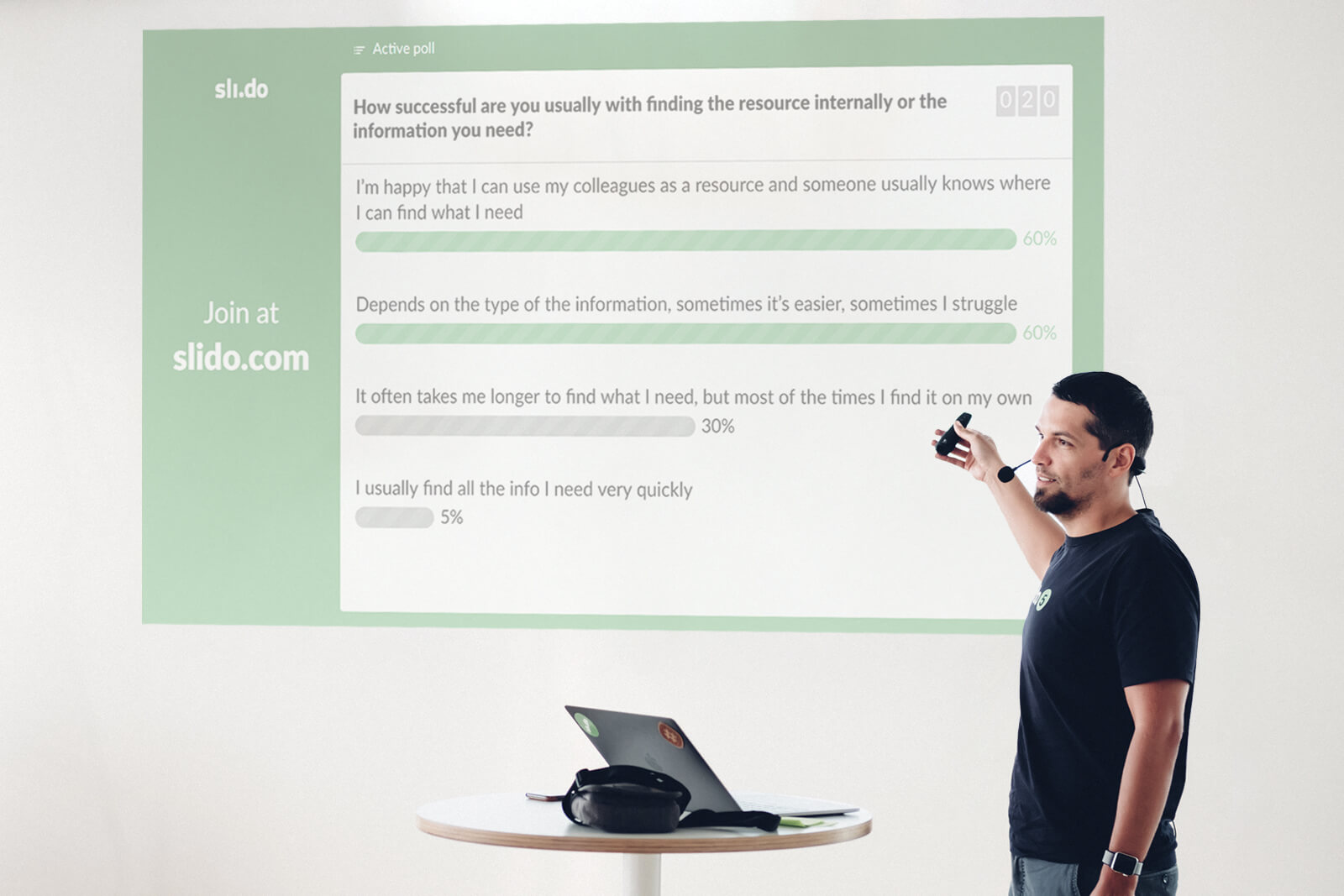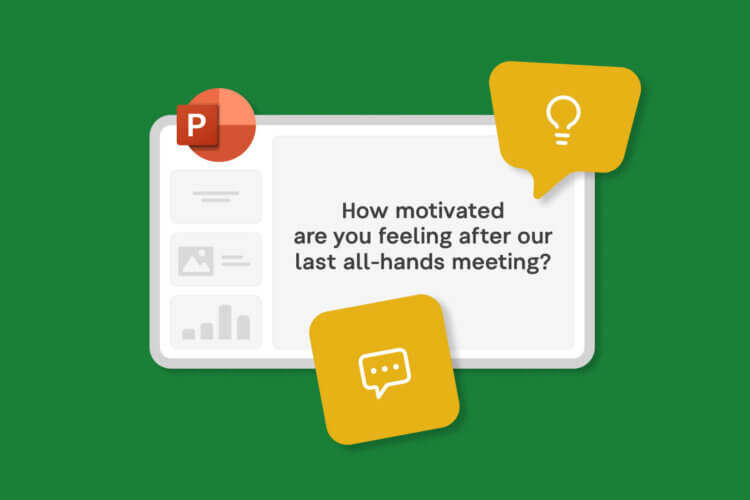How you interact with your audience during your presentation matters. It has, in fact, become a must-have ability in every public speaker’s arsenal.
Your delegates expect interaction and engagement. They want to participate, not merely observe.
One of the most successful ways to do that is live polling. You basically ask your audience a question and they will answer. As simple as that.
I’ve witnessed hundreds of speakers leverage the potential of live polls, and have seen what magic they can do. Based on that, I’ve put down 5 types of polls that have the power to turn your presentation around and enhance your attendees’ learning.
I know we speakers love practical examples, so I have included those too. Enjoy.
1. Polls to set up learning objectives
The following quote from an adult education pioneer, Malcolm S. Knowles, had a profound effect on how I approach my presentations. “Adult learners are in charge of their own learning.”
Funny thing is that many adults are aware of this fact, but they easily fall back into the back-to-school mindset. They simply expect to be talked to and instructed.
As a presenter or facilitator, you can help people get rid of this feeling of dependency. The key is to help them identify what they want to learn at your session. You can do this elegantly with live polls.
At the start of your presentation, run a poll asking about your delegates’ motivation to attend your presentation and what they hope to take from it. Make it a multiple choice poll to make it easier for the audience to vote.
Give people one or two minutes to reflect on the options and then prompt them to send their votes in. Once the results are up, make sure to comment on them. To bring in more interaction, walk among the audience and collect some responses from the floor.
Example polls
- What would you like to learn today?
- What would you like to get out of this event?
- What is one thing you’d like to walk away with after this session?
Related story: How to Use and Facilitate Slido Polls in Your Presentation
2. Polls to spotlight your delegates’ knowledge
People come to your learning session with a rich background of knowledge and experience. It provides an invaluable resource for you to build on, as well as for other participants to tap into. Sadly, it is often overlooked.
Running a few live polls at the start of your presentation can help you unearth the knowledge that your participants have brought along. Then you can fully release it later on with interactive learning techniques, such as:
- Peer-to-peer discussion
- Live barometer
- Problem-based learning
Bringing to light the participants’ knowledge also boosts networking. The learnings from the polls encourage delegates to talk to each other and exchange their experiences.
Example polls
- How long have you been working in your industry?
- What position do you currently hold?
- Which sector or group do you represent?
3. Polls to find out your attendees’ opinions
Without the participants’ authentic engagement, there is no learning. And for many, engagement means being heard.
Live polls give you a chance to engage dozens, or hundreds, of delegates at once and uncover their viewpoints on the presented topic. And as a bonus, you can effectively pull them into your presentation.
Before the Eventex session titled Success Is Not a Spectator Sport, moderator Jan-Jaap In der Maur asked the audience an open poll question, What determines success for you? to prepare the ground for the keynote speaker. The entries were then displayed in a form of word cloud so the entire audience could see which factors others see as the most decisive.
You can easily replicate a similar scenario at your own presentation.
Example polls
- What does X or Y mean to you?
- What is the most important trait of a successful X or Y?
- How would you define X or Y?
Related story: How to Give a Killer Presentation Your Audience Won’t Forget
4. Polls to point out knowledge gaps
Delivering an ‘aha!’ moment to the attendees is the holy grail for many speakers. And the most powerful ‘aha!’ experiences are preceded by the itching ‘huh?’ moments.
The trick is to ask your participants the right questions in order to highlight the knowledge gaps in the room. This helps to stir the listeners’ interest in learning the answer.
In the book Made to Stick, authors Chip and Dan Heath featured Eric Mazur, a Harvard physics professor, who poses conceptual questions throughout his class and asks his students to vote publicly on the answer. “The simple act of committing to an answer makes students more engaged and curious about the outcome,” write the authors.
Here’s a little trick to get even more interactive with your audience: Before revealing the results of the poll, walk among the attendees with a mic and ask a few people to guess what the most common answer will be.
Alternatively, you can spice up your presentation with a quiz poll and have your audience guess the correct answer.
Example Polls
- What do you think is the most …?
- How many people do you think …?
- What percentage of industry experts do you think find/consider…?
5. Polls to collect valuable insights
Running a live poll is an amazing opportunity for you to gather valuable insights from dozens, sometimes hundreds, of experts attending your session. Just imagine that potential!
You can extend the reach of your presentation beyond the audience sitting physically in the room. Use captured data from live polls to nurture your blog, put together a write-up from your session and share it with your followers on social media.
After asking a poll question about current event trends, Michael Heipel found out that 70% of experts in the room consider digital transformation as the most powerful trend that will impact the industry. After the conference was over, the Ungerboeck EMEA organizers shared the generated insights in a form of a blog post with the rest of their community, giving both additional exposure to Michael’s talk, and extending the life cycle of their event.
Example Polls
- Which trend will have the most profound impact on…?
- Which is the most important motivation for people to…?
- What’s the greatest challenge in your industry right now?
In conclusion
With live polls, you can turn your presentation into a dynamic conversation. Increasing the level of interaction with your audience brings more value to your presentation and enhances the learning experience for your participants.
The options are infinite. Every presentation differs in objectives and format. Yet, one thing is certain: The future of speaking will be more interactive and conversational.




